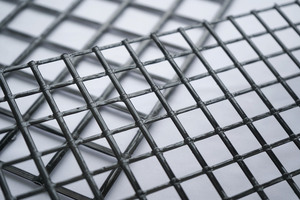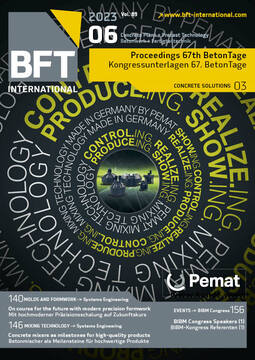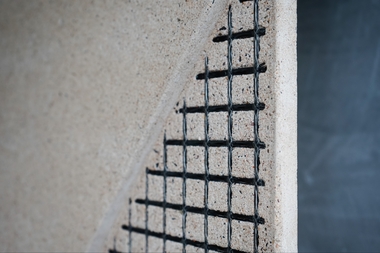Potentials of carbon-reinforced concrete construction: Guideline, sustainability and real-life projects
Welcome to the world of
carbon-reinforced concrete construction!
This presentation will address the potentials of carbon-reinforced concrete construction.
In concrete with non-metallic types of reinforcement, the normally used steel reinforcement is replaced by grids made of carbon or glass fibers. These are non-corrosive, which is why the concrete cover of precast concrete elements can be significantly reduced in thickness
and therefore in weight. As a result, up to 50 % of resources and up to 30 % of carbon emissions
can be saved, in some cases even more depending on the design. This represents a large potential for better managing our resources and promotes climate-neutral construction for future generations.
To date, this type of construction has required time-consuming approval procedures – such as approvals on a case-by-case basis – for all structurally relevant construction projects. However, this will soon change. We expect the national technical approval for solidian
GRID, which is made of carbon fibers, to be granted before the end of this year. As a result, solidian will be granted an approval not only for structural components but, for the first time, for the
reinforcement itself, which will considerably facilitate building with this innovative construction material.
Combined with the DAfStb guideline on “Precast elements with non-metallic reinforcement”, which is also scheduled for publication as a standard (white print) in 2023, this represents a milestone for carbon-reinforced concrete construction. Its application requires appropriately approved reinforcement materials that provide all the characteristic values necessary for designing in compliance with the guideline. The approval meets this requirement. This allows the potential inherent in this type of construction to be better exploited, thus paving the way for standard use in real-life applications.
Based on selected real-life projects, the presentation will show in what way the construction material has already been used in design and construction today, the advantages that have resulted
in the different projects, and how
design and realization could proceed differently in the future in view of the new legal situation.









